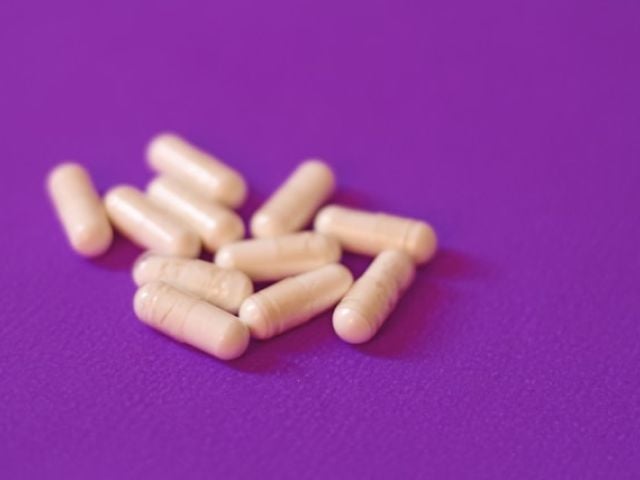
NAD and Diabetes: What Should You Know?
Millions live with diabetes every day, but new studies have uncovered a fascinating tie to a molecule called NAD. This could shake up the way we manage blood sugar and keep diabetic complications at bay.
Grasping this link might guide smarter health choices. Here’s what the science says about NAD and its role in diabetes.
Key Takeaways
- NAD depletion plays a central role in diabetes complications like nerve damage and heart problems
- Both type 1 and type 2 diabetes drain NAD stores but through different mechanisms
- NAD precursors like NMN show promise for improving insulin sensitivity and glucose control
- Testing your NAD levels can help guide personalized treatment decisions
What is NAD and Why Does it Matter for Diabetics?
Nicotinamide adenine dinucleotide, or NAD, is a coenzyme present in every cell of the body. It fuels energy creation, mends broken DNA, and keeps metabolism steady.
NAD comes in two forms your body juggles. There’s NAD+, the oxidized version, and NADH, its reduced twin. Together, they power cellular tasks. When their harmony breaks, things go wrong.
As a helper, NAD teams up with countless enzymes. These enzymes tackle everything—breaking down glucose, lipid metabolism, or mending damaged DNA. If NAD runs low, cells lose their way.
How NAD Metabolism Changes in Diabetes
Diabetes creates a perfect storm that disrupts your body’s NAD balance. High blood glucose levels trigger a cascade of problems that drain your NAD stores1.
The Pseudohypoxia Problem
When glucose levels stay high, your cells produce too much NADH2. This creates what scientists call “pseudohypoxia” – a state where cells act like they’re starving for oxygen even when they’re not.
This imbalance affects how your body processes both sugar and fat. Your cellular machinery starts working less efficiently, making diabetes symptoms worse.
Increased NAD Consumption
Diabetes also increases oxidative stress throughout your body. This damage activates repair enzymes called PARPs3, which consume large amounts of NAD to fix DNA damage.
The result? Your cells run out of NAD just when they need it most. This creates a vicious cycle where cellular damage leads to more NAD depletion.
Type 1 vs Type 2: Different NAD Problems
The way diabetes affects NAD depends on which type you have. Both conditions drain NAD stores, but through different mechanisms.
Type 1 Diabetes and NAD Depletion
In type 1 diabetes, your immune system attacks insulin-producing cells. This creates massive oxidative stress that activates PARP enzymes.
These enzymes rapidly consume NAD to repair DNA damage. The result is energy failure in pancreatic cells and other tissues throughout your body.
Type 2 Diabetes: A Complex Web
Type 2 diabetes mellitus involves a more complex mechanism. High glucose levels activate protein kinase pathways that reduce NAD production.
This happens because key enzymes like NAMPT become less active. Your body literally loses its ability to make enough NAD to meet cellular demands.
The resulting NAD depletion contributes to insulin resistance and worsening blood sugar control.
The Role of NAD in Diabetic Complications
Research shows that NAD depletion contributes to many serious diabetic complications. Understanding these connections could lead to better treatments.
Diabetic Neuropathy
Nerve damage is one of the most common diabetic complications. Studies show that NAD deficiency in nerve cells leads to mitochondrial dysfunction and eventual nerve death4.
When NAD levels drop, protective proteins called sirtuins become less active. This leaves nerve fibers vulnerable to damage from high glucose levels.
Research shows that NAD deficiency symptoms often include nerve problems, fatigue, and reduced cognitive function. Studies demonstrate that NAD precursors can reverse experimental diabetic neuropathy5.
Kidney Disease in Diabetics
Diabetic nephropathy involves complex changes in kidney NAD metabolism6. Research reveals decreased NAD levels in diabetic kidneys, leading to inflammation and tissue damage.
The kidney’s ability to make new NAD becomes impaired. This creates a cycle where kidney function declines as NAD levels drop.
Heart Complications
Diabetic cardiomyopathy is closely linked to NAD imbalance in heart muscle7. The NAD+/NADH ratio becomes disrupted, impairing energy production in cardiac cells.
This leads to progressive heart dysfunction and increased risk of heart failure. Restoring NAD balance could protect heart health in diabetic patients.
Heart problems in diabetes often involve mitochondrial dysfunction, which NAD helps address at the cellular level.
NAD Precursors: A New Hope for Diabetics?
Scientists have discovered that boosting NAD levels might help treat diabetes and its complications. Special molecules called NAD precursors can increase cellular NAD stores.
Nicotinamide Mononucleotide (NMN)
NMN is a direct precursor that your body converts into NAD. Research shows remarkable results in diabetic animal models.
Studies found that NMN completely normalized glucose tolerance in diabetic female mice8. It also improved insulin sensitivity in male diabetic mice and restored NAD levels in key tissues.
Human clinical trials are showing promise too. In postmenopausal women, 250mg daily of NMN improved muscle insulin sensitivity by about 25%9.
Nicotinamide Riboside (NR)
NR is another NAD precursor that has shown benefits in metabolic disorders10. Animal studies demonstrate improved glucose tolerance and reduced liver damage.
But human trials with NR have shown mixed results. Some studies report no meaningful improvement in insulin sensitivity in healthy individuals.
Testing Your NAD Levels: Why It Matters
Understanding your personal NAD status could be key to managing diabetes effectively. NAD levels vary significantly between individuals, and this variation affects treatment response.
Dr. Jin-Xiong She, who led groundbreaking diabetes research at the University of Florida’s Diabetes Center, has pioneered methods to measure cellular NAD levels. His research contributed to major studies like TEDDY (The Environmental Determinants of Diabetes in the Young), which screened over 424,000 newborns11.
Optimal NAD Ranges
Research has established specific NAD level ranges that indicate optimal cellular function:
| NAD Level Range | Status | Health Implications |
|---|---|---|
| 40-100 μM | Optimal | Normal cellular function |
| 30-40 μM | Suboptimal | Mild energy deficiency |
| 20-30 μM | Deficient | Increased disease risk |
| 0-20 μM | Severely deficient | Significant health problems |
Levels above 100 μM may not provide additional benefits and could potentially be harmful.
The Intracellular NAD+ Test offers a way to measure your cellular NAD levels accurately. This information can help guide supplement decisions and monitor treatment progress.
For those interested in learning more about the testing process, our guide on how to test your NAD levels provides detailed information.
NAD Supplementation Strategies for Diabetics
If you’re considering NAD supplementation for diabetes, several factors should guide your decision. Individual response varies widely, so personalized approaches work best.
Choosing the right supplement requires understanding what to look for in NAD supplements and potential safety considerations.
Dosage Considerations
Research suggests effective NMN doses range from 250-500mg daily. For NR, studies have used 300-1000mg daily with varying results.
Starting with lower doses and gradually increasing allows you to assess your response. Some people notice improvements in energy and glucose control within weeks.
Timing and Combination Therapy
Taking NAD precursors on an empty stomach may improve absorption. Some people prefer splitting doses throughout the day.
Combining NAD precursors with other supportive nutrients might boost benefits. Antioxidants can reduce oxidative stress, while exercise naturally boosts NAD production.
The Vitality↑® NAD+ Booster combines NMN with complementary compounds like creatine and D-ribose. This formulation addresses multiple pathways that support cellular energy production.
Lifestyle Factors That Boost NAD Naturally
While supplements can help, lifestyle changes also influence your NAD levels. These approaches work synergistically with supplementation.
Caloric Restriction and Fasting
Limiting calories naturally increases NAD levels and activates protective sirtuin proteins. Intermittent fasting can boost NAD production while improving insulin sensitivity.
Even modest calorie reduction can make a difference. Focus on reducing refined carbohydrates and processed foods rather than drastically cutting calories.
Exercise and NAD Production
Regular physical activity improves your body’s ability to make NAD. Both aerobic exercise and resistance training stimulate NAD biosynthesis pathways.
Exercise also improves insulin sensitivity independent of NAD effects. Physical activity enhances energy metabolism and creates powerful benefits for diabetes management.
The Future of NAD-Based Diabetes Treatment
Research into NAD and diabetes is rapidly advancing. New therapeutic approaches are being developed that target specific aspects of NAD metabolism.
Personalized Medicine Approaches
Future treatments may be tailored based on individual NAD metabolism patterns. Genetic testing could identify people most likely to benefit from specific interventions.
Biomarker development is advancing rapidly. Soon, doctors might routinely test NAD levels alongside traditional diabetes markers like HbA1c.
Combination Therapies
The most promising approaches combine NAD precursors with other interventions. This might include traditional diabetes medications, antioxidants, and lifestyle modifications.
Research is exploring how to optimize these combinations for maximum benefit. The goal is creating complete treatment plans that address multiple pathways simultaneously.
Safety and Considerations for Patients with Diabetes
While NAD precursors appear generally safe, people with diabetes should take certain precautions. Individual responses vary, and some people may experience side effects.
Monitoring and Interactions
Start with professional guidance, especially if you take diabetes medications. NAD precursors might affect blood sugar control and could interact with certain drugs.
Regular monitoring becomes even more important when adding new supplements. Track your blood glucose patterns and watch for any changes.
Who Should Be Cautious
People with advanced diabetic complications should be particularly careful. High doses of NAD precursors may cause adverse effects in some populations.
Pregnant women and people with certain genetic conditions should avoid NAD supplementation until more research is available.
Taking Action: Your Next Steps
Understanding the connection between NAD and diabetes opens new possibilities for managing your health. The research clearly shows that NAD depletion plays a central role in diabetic complications.
Consider starting with NAD level testing to understand your current status. The NAD Optimization® Starter Package includes testing and supplementation to help you get started.
Remember that NAD optimization works best as part of a complete approach. Combine testing, targeted supplementation, and lifestyle changes for the best results.
The future of diabetes care may well include NAD metabolism as a primary therapeutic target. By understanding and addressing NAD deficiency, we might be able to prevent complications and improve quality of life for millions of people with diabetes.
Your journey to better health starts with understanding your body’s unique needs. NAD testing and optimization could be the missing piece in your diabetes management puzzle.
- https://pmc.ncbi.nlm.nih.gov/articles/PMC7610120/ ↩︎
- https://www.dovepress.com/sources-and-implications-of-nadhnad-redox-imbalance-in-diabetes-and-it-peer-reviewed-article-DMSO ↩︎
- https://pmc.ncbi.nlm.nih.gov/articles/PMC2228261/ ↩︎
- https://www.nature.com/articles/s44324-025-00067-0 ↩︎
- https://www.mdpi.com/1422-0067/25/2/1102 ↩︎
- https://pmc.ncbi.nlm.nih.gov/articles/PMC8333862/ ↩︎
- https://www.ahajournals.org/doi/10.1161/CIRCHEARTFAILURE.120.008170 ↩︎
- https://pmc.ncbi.nlm.nih.gov/articles/PMC3204926/ ↩︎
- https://www.science.org/doi/10.1126/science.abe9985 ↩︎
- https://pmc.ncbi.nlm.nih.gov/articles/PMC4882590/ ↩︎
- https://link.springer.com/article/10.1007/s00125-015-3514-y ↩︎











